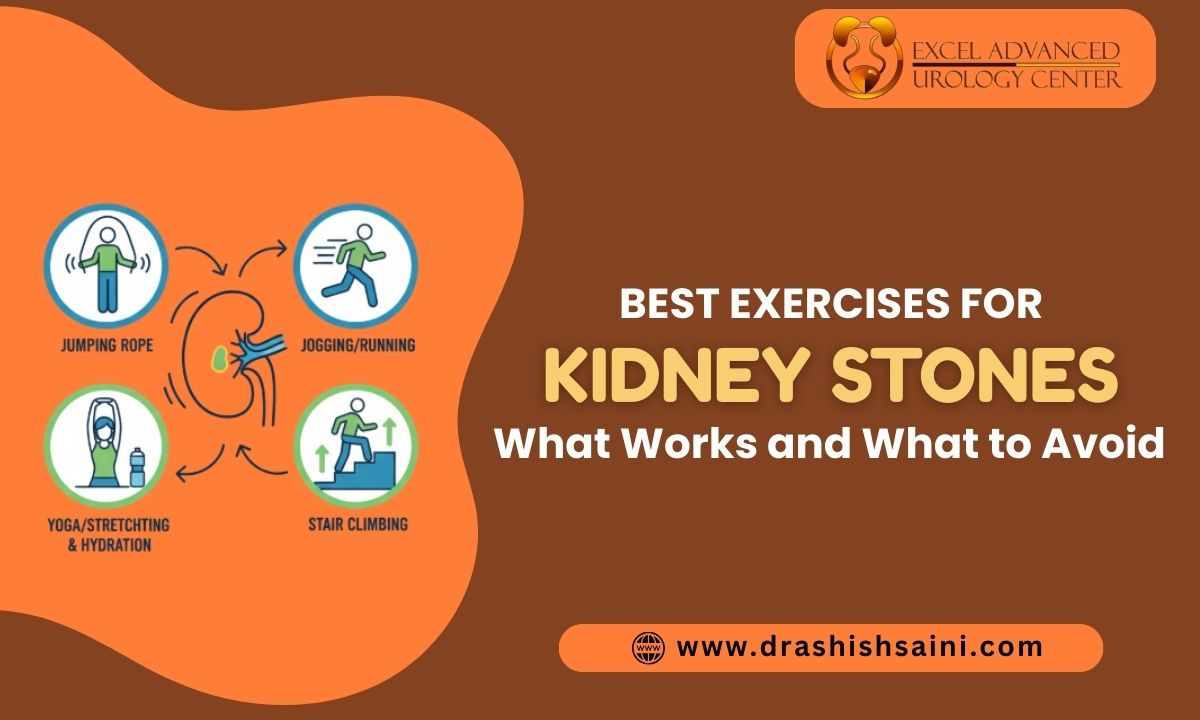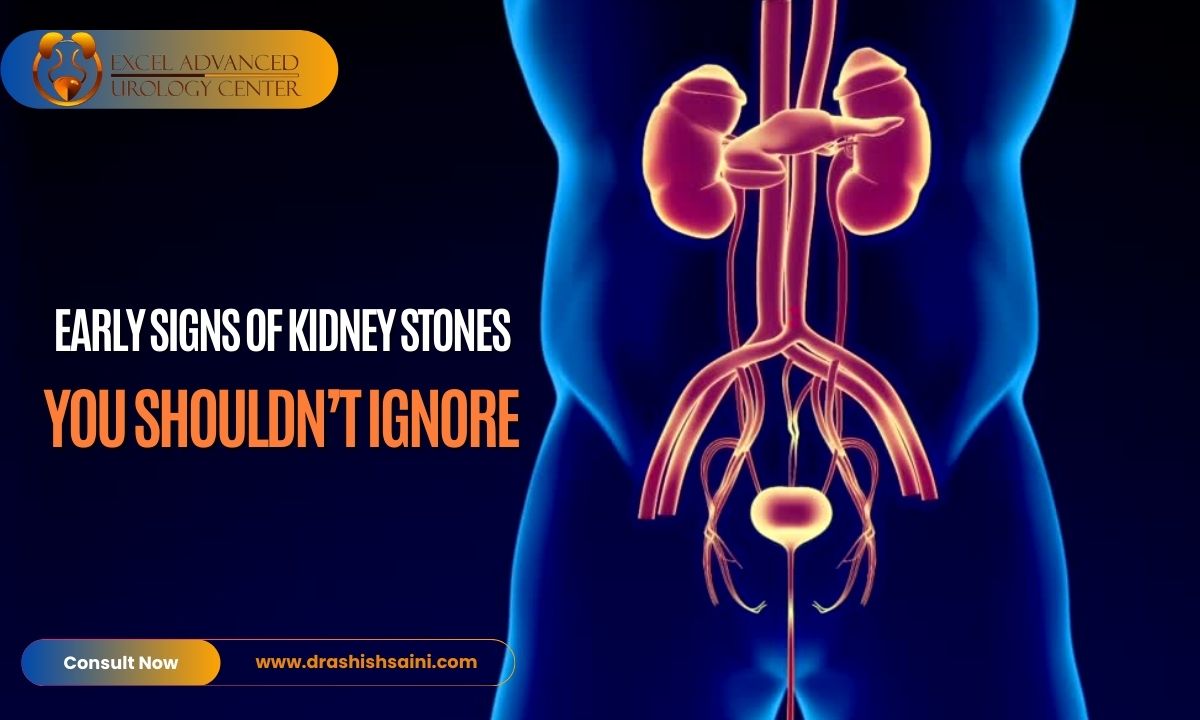

Kidney stones can be painful and disruptive, especially when they start moving through the urinary tract. Along with proper treatment and medical guidance, certain lifestyle choices—including exercise—can play a supportive role in managing kidney stones. But an important question many patients ask is: “Which exercises are safe, and which ones should I avoid if I have kidney stones?”
In this article, we’ll look at the best exercises for kidney stones, exercises to avoid, and practical safety tips to help you stay active without worsening your condition.
Understanding Kidney Stones and Exercise
Kidney stones are hard mineral deposits that form inside the kidneys. While small stones may pass naturally, larger ones can cause severe pain, nausea, and urinary difficulties.
Exercise, when done correctly, offers several benefits for people dealing with kidney stones:
Encourages urine flow, which may help small stones pass.
Supports overall kidney health by improving circulation and metabolism.
Helps prevent recurrence by maintaining a healthy weight and reducing risk factors like obesity and metabolic issues.
⚠️ However, not all forms of exercise are suitable. High-impact activities can worsen symptoms or cause discomfort. The key is choosing safe, low-impact exercises that support your body while you recover or prevent recurrence.
Best Exercises for Kidney Stones
Here are the most recommended exercises for people with kidney stones:
1. Walking
Walking is one of the safest and most effective activities. It is low-impact, promotes better urine flow, and keeps the body active without straining the kidneys.
How much? Aim for 20–30 minutes daily.
Tip: Carry a water bottle to stay hydrated before, during, and after your walk.
2. Light Jogging (Only if Pain-Free)
Light jogging may help dislodge small stones by creating gentle movement in the urinary tract. However, it should only be attempted if you are not experiencing active pain.
Avoid if: You feel flank pain, cramping, or discomfort while jogging.
3. Yoga Poses for Kidney Stones
Yoga combines gentle stretching, deep breathing, and relaxation—all of which can help patients with kidney stones. Some beneficial poses include:
Pawanmuktasana (Wind-Relieving Pose): Improves digestion and stimulates urinary flow.
Bhujangasana (Cobra Pose): Enhances circulation in the abdominal region and supports kidney function.
Dhanurasana (Bow Pose): Massages abdominal organs and may help in easing mild discomfort.
Important: Avoid yoga if you are in the middle of a painful kidney stone attack (renal colic). Always practice under guidance if you’re new to yoga.
4. Stretching & Breathing Exercises
Gentle stretching improves flexibility and reduces stiffness, while deep breathing exercises help manage stress and anxiety that often accompany pain. Stress can worsen discomfort, so learning relaxation techniques is useful.
💡 Need expert help on Kidney Stone Treatments? Consult Dr. Ashish Saini, one of Delhi NCR’s leading urologists, with over 18 years of experience. Book your consultation here or connect via +91-9643438106.
Exercises to Avoid with Kidney Stones
Not all workouts are safe if you have kidney stones. Certain exercises can increase abdominal pressure, worsen pain, or lead to complications.
Heavy Weightlifting: Puts unnecessary pressure on the abdomen and kidneys.
High-Intensity Workouts (HIIT, CrossFit, etc.): May cause dehydration and increase discomfort.
Contact Sports (Football, Wrestling, Martial Arts): Risk of abdominal trauma, which can worsen pain.
Exercising During Acute Renal Colic: If you’re in severe pain, exercising can aggravate the condition. Seek medical care instead.
Tips for Exercising Safely with Kidney Stones
To gain the benefits of exercise without harming your health, follow these practical safety tips:
Stay Hydrated: Dehydration is one of the biggest risk factors for kidney stones. Drink water before, during, and after exercise.
Start Slow: Begin with low-intensity exercises like walking, then increase gradually.
Listen to Your Body: Stop immediately if you experience pain, dizziness, or blood in the urine.
Avoid Holding Urine: Always empty your bladder before starting exercise.
Pair Exercise with a Stone-Preventive Diet: Limit salt, maintain a balanced calcium intake, and include natural stone-preventing foods like lemon water or coconut water.
Consult Your Urologist: Before starting any new routine, get clearance from your doctor—especially if you have a history of large or recurrent stones.
When to Stop Exercising and See a Doctor
Exercise should support recovery, not replace medical care. Stop exercising and seek medical attention if you experience:
Severe flank or back pain during/after activity.
Blood in urine (hematuria).
Persistent nausea, vomiting, or fever.
Pain that doesn’t reduce despite hydration and light activity.
These symptoms may indicate that the stone is too large to pass naturally and requires medical intervention.
💡 Need expert help on Kidney Stone Treatments? Consult Dr. Ashish Saini, one of Delhi NCR’s leading urologists, with over 18 years of experience. Book your consultation here or connect via +91-9643438106.
Medical Treatments vs. Exercise: Setting Realistic Expectations
It’s important to understand that while exercise can support kidney health and may help smaller stones pass, exercise alone cannot dissolve or treat larger stones.
Medical treatments such as:
Medications (pain relief, stone passage support)
ESWL (Shockwave Lithotripsy)
URS (Ureteroscopy)
PCNL (Percutaneous Nephrolithotomy)
…are often necessary for stones that are too large to pass naturally.
This is why it’s essential to combine safe lifestyle practices (exercise + diet + hydration) with professional medical care.
Conclusion
Exercise plays an important role in supporting kidney stone management, but it must be approached with caution.
Best exercises: Walking, light jogging (if pain-free), yoga, stretching, and breathing practices.
Avoid: Heavy lifting, high-intensity training, contact sports, and exercising during painful episodes.
Golden rule: Stay hydrated, listen to your body, and consult a urologist before starting a new routine.
If you’re dealing with kidney stones and want personalized guidance on treatment and safe lifestyle practices, consult Dr. Ashish Saini, leading urologist in Delhi with extensive experience in advanced kidney stone management.
👉 Book an Appointment to learn the safest and most effective treatment for your condition.
Frequently Asked Questions (FAQ) on Kidney Stones and Exercise
1. Which Exercise is Good for Kidney Stones?
Walking, light jogging (if you are pain-free), and certain yoga poses like Pawanmuktasana and Bhujangasana are good for kidney stones. These exercises help improve urine flow and may assist small stones in passing naturally.
2. Can Running Dislodge Kidney Stones?
Light jogging or running can sometimes help dislodge very small stones by creating movement in the urinary tract. However, if you are experiencing severe pain, running is not recommended.
3. Should You Exercise with Kidney Stones?
Yes, but only if you are not in severe pain. Light, low-impact exercises are safe and can support overall kidney health. During an acute pain attack (renal colic), you should rest and seek medical help instead of exercising.
4. What is the Best Position for Kidney Stone Pain Relief?
Many patients find relief by lying on the opposite side of the pain, using a pillow for support, or adopting the fetal position.
5. Which Stomach Exercises Should I Do If I Have a Kidney Stone?
Avoid strenuous stomach exercises like crunches or heavy core workouts. Instead, try yoga stretches or gentle twisting poses that promote relaxation without straining the abdomen.
6. Are There Yoga Poses That Might Help with Kidney Stone Pain or Passing a Stone?
Yes. Yoga poses like Pawanmuktasana (Wind-Relieving Pose), Balasana (Child’s Pose), and Supta Baddha Konasana (Reclining Bound Angle Pose) may help ease discomfort and encourage urine flow.
7. What are the Best Things for Kidney Stone Pain Management?
Stay hydrated (water, lemon water, coconut water).
Apply a warm compress on the painful area.
Try light stretching or yoga for relaxation.
Use safe pain relief medication (only under a doctor’s advice).
Seek medical treatment if pain is severe or persistent.





